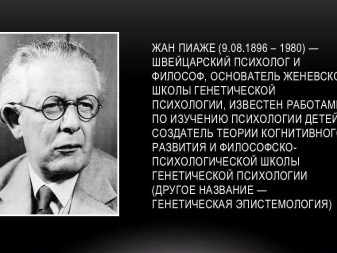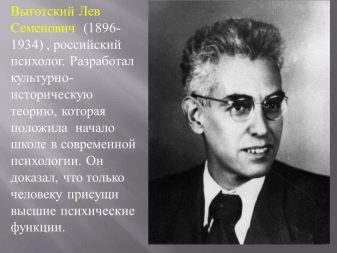Cognitive thinking: what is it and how to develop it?

The thought process involves some manipulation of knowledge, therefore it is referred to as the cognitive system. The transformation of information into the final product depends on the degree of cognitive actions of thinking.
Peculiarities
Cognitive science (from lat.cognitionis - cognition) combines cognitive psychology, linguistics, neurophysiology, as well as the theory of cognition and artificial intelligence... The development of this science continues in several directions. The concept of biological evolution by Jean Piaget, the theory of rational thinking with the inclusion of the process of transforming external actions into the internal mental functions of Lev Vygotsky and the informational approach to the system are taken as a basis. The mechanism of operation of the structure of the brain is studied using a tomograph and other modern scanning methods.


Cognitive thinking inextricably linked with the cognitive process. It answers for the formation of concepts, decision-making and the development of reactions.
The type of cognitive thinking activity depends on the personality, experience of interaction with other people. An important role is played by knowledge, ability to solve various problems, logic, attention, perception and memory of the individual.
In psychology, there are 3 types of such thinking.
- Visual-effective type is aimed at solving certain problems related to constructiveness, production and organization of activities. It is inherent in children under 3 years of age, whose cognitive process is inextricably linked with the use of hands.
- Visual-shaped view transforms generalized thoughts into concrete images. It is formed in children from 4-7 years old. At this time, the connection of consciousness with practical movements is not as strong as before.
- Abstract thinking is associated with abstract reasoning. It is observed in schoolchildren and adults who can operate with generalized concepts, devoid of direct visualization and images.

The nature of cognitive styles of thinking has not yet been fully understood. Let's take a look at some of them.
- Representatives of a simple style of cognitive thinking interpret the processes taking place in a simplified form. The owners of a complex style tend to be multidimensional when perceiving existing concepts and identifying many interrelated sides in them.
- Owners of specific mental activity do not tolerate uncertainty, depend on status and authority... They have black and white thinking, stereotyped decisions. People with abstract cognitive thinking are prone to risk, independence, flexibility. They are characterized by an extensive association of concepts.
- People with an analytical style pay attention to the difference between objects, fixate on their distinctive features, the smallest elements. The synthetic style is inherent in individuals who tend to focus on the similarity of information and find common signs in them.
- Possessors of an impulsive style tend to make instant decisions with the available choice. Haste often leads to mistakes. Those with a reflective style act in slow motion when making decisions, so the occurrence of errors is minimized.
- Some people have a wide distribution of attention to many details at the same time.... Such individuals are able to scan the displayed situation. Other individuals can only superficially, fragmentarily characterize facts and phenomena that have caught their eye. They have an inherent ability of tight control, which is called focusing style.
- Tolerant subjects are able to accept ambiguous events that do not correspond to the ideas of a person. They can analyze them according to their characteristics. Intolerant people are not ready to receive cognitive experience, where there is information that contradicts their knowledge.

Principles
The cognitive system includes conscious and unconscious thinking. Researchers have identified 6 principles of separation from one another.
- Unconscious thought concept based on conscious and unconscious types of thinking. Conscious thinking is associated with cognitive action aimed at a task or object that is in focus. With an unconscious thought process, events are outside the focus of the thinking individual.
- The law of capacity implies storing no more than 7-9 items of information in working memory. This rule does not apply to unconscious thinking.
- Top-Down and Bottom-Up Aspects testify to the issuance of a ready-made solution by the subconscious sphere after absorbing the facts entirely, while conscious thinking processes data systematically through various schemes and definitions.
- The principle of weight boils down to the fact that the best decisions are made by people in moments of some distraction from the important and complex tasks. Consequently, unconscious thinking is often more effective than conscious reasoning.
- Principle of the rule claims that the answers found at the unconscious level do not always correspond to the laws of logic, since they are based on associations. Conscious decisions are always based on formal rules.
- The principle of convergence (convergence) involves getting to the heart of the problem and forgetting about it. Then unconscious thinking takes over and the dead end is easily resolved. Some cooperation is formed between conscious and unconscious thinking.

Development
Cognitive thinking develops with the help of inner speechtherefore, the thought process is language dependent. Language and thought are inseparable.They must be trained daily, otherwise it is difficult to achieve good results.
Proper nutrition is also important. The brain must be supplied with a large amount of vitamins and minerals. It is useful to eat nuts, vegetables, chocolate, eggs. Sports activities, walks in the fresh air have a positive effect on the development of cognitive mental activity.
This type of thinking is well developed:
- games of checkers, chess, backgammon, poker;
- assembly of puzzles, Rubik's cube;
- solving crosswords, puzzles, charades;
- solving mathematical problems;
- various games in "words", "cities";
- learning a foreign language with the establishment of a connection with the native language, the search for associations;
- reading books with an analysis of each page read and fantasizing on the topic of further events.



Synchronized drawing improves motor skills and eye coordination. You should take a large sheet of paper and a pencil in both hands. Then it is necessary to simultaneously begin to mirror objects. With two hands, you need to draw circles, ovals, triangles, squares, rectangles and other objects.
The next task comes down to the inseparable writing of eights. First, they are drawn alternately with the left and right hands, then synchronously with both hands. Then, along with the eights, they write the lowercase letter "a", which is again followed by the numbers "8". In the same way, the next letters of the alphabet are written interspersed with eights.
Experts recommend improving your memory by looking at an old photo album. Development takes place along with memories of past events.
All training exercises help to maintain brain tone throughout the day, increase efficiency, maintain a clear and sharp mind until old age.
Major mistakes
Often, the cognitive thought process leads some beliefs to distort. And then appear stereotyped deviations in thinking. For example, there are known cases of people's tendency to deny the opinions of strangers who do not belong to their group, and to fully agree with like-minded classmates, even if those statements are unfounded and unjustified.

There are many errors associated with cognitive bias. We will list the most common ones.
All-or-Nothing Thinking
Some people, especially perfectionists, tend to go to extremes. They believe that if the task is not 100% completed, then it is not ready. The master came late to the call, which means that he is a poor specialist, and it is not worth resorting to the services of the company where he works anymore. If a dieter accidentally ate a pie, then there is no longer any point in adhering to a diet, since all efforts are reduced to zero.
Generalization of special cases
Any accidental offense is a pretext for unreasonably transferring a single incident to a collective action. A single event leads people to the conclusion that this is always the case. Or, conversely, never. A person who has not submitted the report on time is worried that now he will never be promoted. The employee did not fulfill the order of high quality, which means that he is a bad employee and always does a bad job with all the tasks.

Excessive dramatization
Sometimes some minor incident turns into a disaster. A beginner athlete received a slight injury during a jump, after which he decides that this sport is not suitable for him, since he is unlikely to be able to land correctly.
Psychologists recommend keeping a diary in which you need to record all your fears. Be sure to highlight the positive and negative aspects.
Over time, a person begins to see positive moments and learns to get himself out of any unpleasant situations.
Sticking labels
Often in teams it is fixed a stable opinion about a person due to a single specific event... For example, a colleague at a corporate party gets drunk. He is labeled a drunkard. Although in fact, it could be an isolated incident that will never happen again. Another employee went deep into his own thoughts and did not say hello to those around him. He was immediately considered an arrogant ignoramus.
Labels generate negative emotions and distort reality. We must learn to objectively assess the situation without relying on a single fact. Once a person who is late does not always demonstrate his indiscipline. You need to be able to separate emotions from specific phenomena.

Unfounded inferences
Sometimes a person takes on the function of speculation and tries to read the thoughts of another person, drawing a conclusion about her negative mood towards her person. A person unreasonably believes that he is treated badly.
Often people, without any reason, predict future events not in their favor. For example, during his speech, the speaker made several mistakes, which gave him reason to believe that now he would never be invited to the conference.
You can not build your guesses on speculation. Unfounded inferences lead to failure. We must always rely on real events without predicting the future.
Denial of positive
Some do not want to notice their own successes and achievements. It seems to them that they are not worthy of praise, since any person would have coped with the task no worse. In this case it is important to realize that everyone deserves recognition from time to time. And this does not imply his arrogance and pride.









